
Roots
Consider a quiet moment at twilight, long ago, beneath a sky dusted with ancestral stars. What whispered secrets did the hands of grandmothers and caretakers pass down, concerning the crown of coils, kinks, and waves that rested upon sleeping heads? The practices of safeguarding textured hair overnight reach far back, a testament to ingenuity, observation, and an enduring respect for the very biology of our strands.
This isn’t merely about preserving a hairstyle; it embodies a deep connection to the earth, to community, and to the inherent strength of hair that has witnessed generations. For communities with rich lineages of textured hair, the nightly ritual was a quiet affirmation of self-care, a way to honor the hair’s natural inclinations, and a method to ensure its continued health across epochs.

What Was the Ancient Understanding of Hair’s Nature?
Long before microscopes unveiled the precise structure of the hair shaft, ancient communities possessed an intuitive awareness of textured hair’s distinct characteristics. They recognized its tendency towards dryness, its thirst for moisture, and its unique vulnerability to environmental elements like friction and dust. This wisdom did not stem from textbooks; it arose from generations of living alongside their hair, observing its responses, and developing solutions born from necessity and a deep kinship with nature.
Hair, particularly coiled and curled hair, possesses a more open cuticle structure and an elliptical cross-section, contributing to its beauty and also to its propensity for moisture loss and tangling. Ancient practitioners understood this through observation, learning that sealing in vital hydration and minimizing disruption during repose were paramount.
For example, in various African societies, where hair served as a living archive of identity and status, its daily and nightly treatment held immense cultural weight. The Bassara women of Chad , known for their remarkable hair length and vitality, have for generations applied a conditioning mixture known as Chebe powder, often combined with natural butters, to their hair. This ancestral blend, once applied, was commonly secured within protective braids, a practice that would extend its moisturizing effects and guard the hair from environmental wear, including during sleep. This method speaks to a deep, practical understanding of hair’s needs, passed through oral tradition.
The preservation of textured hair overnight was not a simple act; it was a deeply rooted practice that safeguarded physical well-being, cultural identity, and spiritual connection.
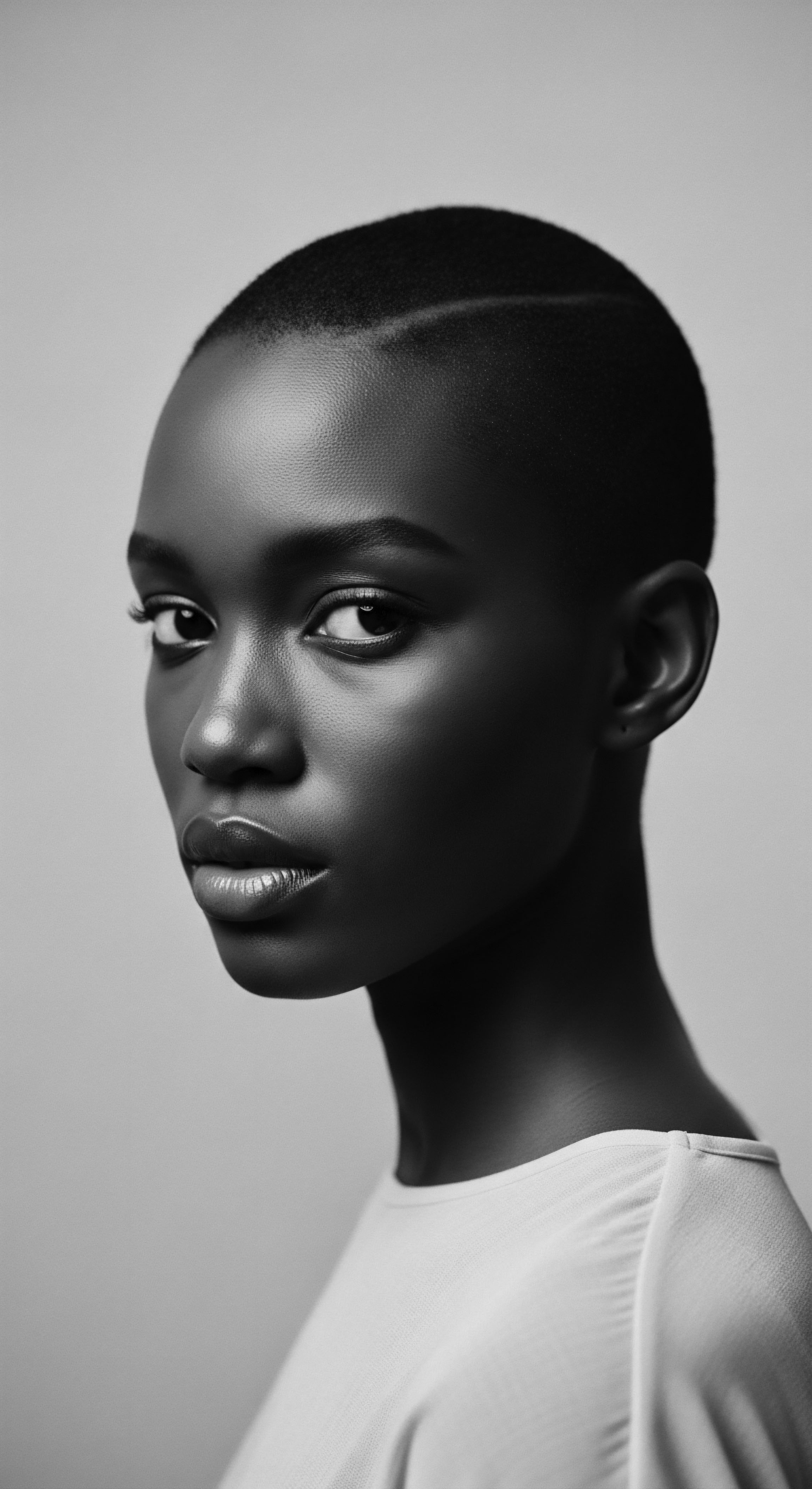
Ancestral Hair Anatomy and Its Care
The biology of textured hair, with its unique helical structure, makes it inherently more prone to tangling and breakage when subjected to friction. This was a truth understood implicitly by those who lived closely with their hair in ancient times. They perceived the hair as a living extension of the self, deserving of meticulous care.
From ancient Egypt to various West African kingdoms , head coverings and specific styling methods were not merely decorative; they served as pragmatic defenses against the elements and the rigors of daily life, extending naturally to the nighttime hours. The goal was to minimize manipulation, retain moisture, and prevent the delicate intertwining of strands that could lead to breakage.
Consider the diverse ways hair was classified and understood in ancient contexts:
- Kemetian Tresses ❉ In ancient Egypt, hairstyles indicated social status and gender. Wigs and elaborate braided styles, often treated with oils and resins, were common. These protective measures likely extended to nocturnal practices to maintain the elaborate styles and the hair’s health, using fine linens or other coverings.
- African Heritage Headwraps ❉ Across countless African communities, headwraps and scarves were customary. These were worn not just for beauty or social display, but as vital protective barriers against harsh sun, dust, and also, during sleep, against friction with sleeping surfaces.
- Braided Wisdom ❉ Many African cultures developed elaborate braiding techniques, from cornrows to various forms of twists. These styles, often adorned with shells or beads, were not only socially significant but also functioned as primary protective styles, locking the hair in place and reducing daily wear and tear.
The foresight shown in these traditions speaks volumes. They understood that the physical nature of hair, how it curls and coils, necessitated a different approach to care than straighter hair types. This ancestral wisdom laid the groundwork for modern hair science, which now validates the efficacy of reducing friction and maintaining moisture for textured hair.
| Ancient Practice Using head coverings during rest |
| Underlying Ancestral Logic Shields hair from dust, environmental harm, and maintains elaborate styles. |
| Modern Scientific Validation Reduces friction with bedding, preventing tangling and breakage. Preserves moisture. |
| Ancient Practice Applying natural oils and butters |
| Underlying Ancestral Logic Nourishes scalp and strands, adds luster, and softens hair. |
| Modern Scientific Validation Provides emollients and humectants, seals cuticle, reduces frizz, aids moisture retention. |
| Ancient Practice Styling in braids or twists |
| Underlying Ancestral Logic Secures hair, reduces tangling, preserves length, and signifies social standing. |
| Modern Scientific Validation Minimizes manipulation, protects ends, and reduces mechanical stress on individual strands. |
| Ancient Practice The ingenuity of ancient communities in protecting textured hair finds strong corroboration in contemporary understanding. |
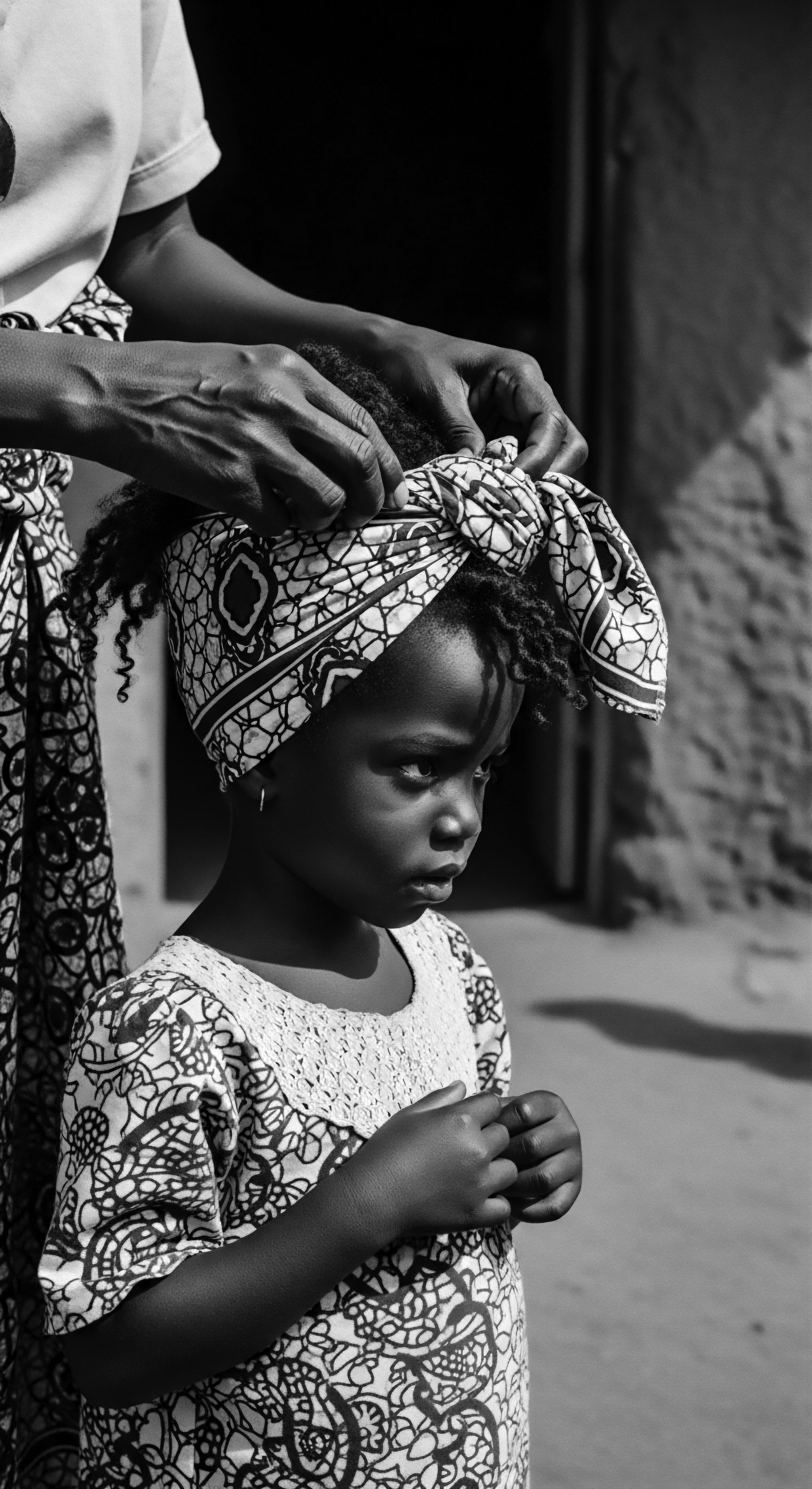
Ritual
The daily lives of ancient communities, particularly those with textured hair, were marked by a rhythm of purposeful actions, each dedicated to nurturing their hair. Nightfall, a time of repose, presented unique challenges and opportunities for preservation. The techniques employed were a thoughtful blend of practical necessity and cultural expression, a living dialogue between human care and the hair’s inherent needs.
These were not mere steps; they were inherited practices, rituals that connected individuals to ancestral knowledge and collective well-being. The art of styling, therefore, extended beyond daytime adornment into the quiet hours of sleep, ensuring hair’s integrity and continuity.
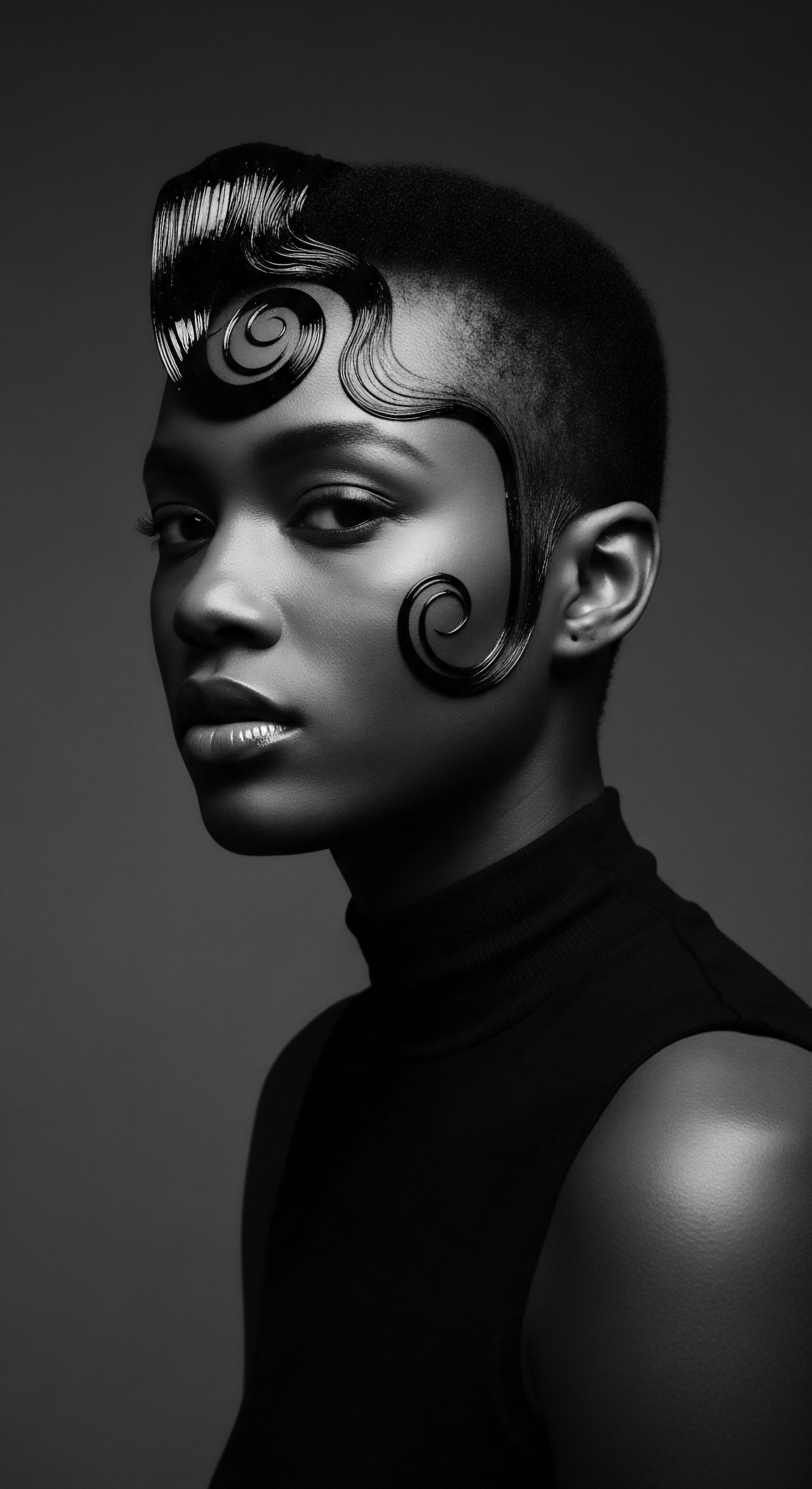
How Did Ancient Styling Practices Safeguard Hair at Night?
The core of overnight hair protection in ancient times revolved around minimizing friction and retaining moisture. Cotton, a common material for bedding, readily absorbs natural oils from the hair, leading to dryness and breakage. Ancient communities, through observation and inherited wisdom, learned to counteract this. The solution often involved either covering the hair with smoother fabrics or employing specific styling configurations that secured the hair against disruptive movement.
One prevalent method was braiding . From the simple plait to more complex cornrows and twists, these styles were not only cultural markers but also practical protective measures. Braids held hair securely, preventing it from tangling as a person shifted during sleep.
This reduced mechanical stress on the hair shaft, a particularly fragile point for textured strands. The origins of braiding trace back thousands of years, with evidence of cornrows in North Africa dating back 6,000 years , serving as both art and a method of care.
Beyond simple braids, communities developed more elaborate techniques that offered even greater nighttime security:
- Bantu Knots ❉ Found in various African cultures, these coiled sections of hair were not just daytime styles. When unraveled, they produced a distinct pattern, but while tied, they offered a compact, self-contained way to protect hair overnight, reducing exposure to surfaces and minimizing friction.
- Hair Threading ❉ In parts of Africa, including Chad, hair threading involved wrapping sections of hair tightly with cotton or wool thread. This technique, while stretching the hair and protecting it from breakage during the day, also served as an effective overnight shield, holding hair taut and preventing knotting.
- High Buns or “Pineapples” ❉ While the modern “pineapple” method describes gathering hair loosely at the top of the head, the principle existed in ancient times. Elevating hair off the neck and back during sleep reduced contact points, a simple yet effective way to maintain style and minimize friction.
The wisdom of ancient hair protection is a living archive, demonstrating how thoughtful preparation for rest safeguards hair’s vitality and cultural meaning.

Tools and Materials a Heritage of Care
The effectiveness of ancient nighttime hair care relied heavily on the careful selection of tools and materials available. These were often natural elements, chosen for their beneficial properties. While modern silk or satin bonnets are widely popular for their smooth surfaces, historical equivalents provided similar benefits.
Head coverings , made from finely woven linens, plant fibers, or even processed animal materials, served as physical barriers between the hair and abrasive sleeping surfaces. In some affluent societies, like those in ancient Egypt or medieval Europe, more luxurious fabrics may have been used, perhaps even early forms of silk or smooth plant-based fabrics.
The selection of materials was informed by the understanding that smooth surfaces would reduce friction, a key cause of breakage in textured hair. This is why silk and satin are valued today; their smooth fibers allow hair to glide, preserving its structure and moisture. The ancestral use of certain hair tools also played a role in nightly preparation.
Wide-toothed combs, often crafted from wood or bone, were used gently to detangle hair before securing it for the night. These tools, unlike modern fine-toothed combs, respected the delicate nature of coiled strands, preventing unnecessary pulling and stress.
| Protective Medium Headwraps and Bonnets |
| Historical Context and Use Ubiquitous in many African cultures for daily wear and during sleep; early versions in Ancient Egypt for wigs and natural hair. |
| Benefit for Textured Hair Overnight Shields hair from environmental damage, prevents tangling, preserves moisture by minimizing friction with bedding. |
| Protective Medium Braids, Twists, and Coils |
| Historical Context and Use Ancient African and Greek practices; also used in Indian hair traditions. |
| Benefit for Textured Hair Overnight Secures hair in a contained structure, reduces manipulation, aids length retention, and prevents mechanical abrasion during sleep. |
| Protective Medium Natural Oils and Butters |
| Historical Context and Use Common across Africa (e.g. Shea butter, Chebe), Egypt (castor oil), Greece/Rome (olive oil), India (coconut oil). |
| Benefit for Textured Hair Overnight Moisturizes and seals the hair cuticle, reducing dryness and frizz, and creating a barrier against moisture loss to environment. |
| Protective Medium The ingenuity of ancient communities in protecting textured hair finds strong corroboration in contemporary understanding. |

Relay
The echoes of ancestral practices, particularly those surrounding the nightly preservation of textured hair, resonate through time, shaping our contemporary understanding of holistic care. These were not simply acts of hygiene or beautification; they were deeply integrated into the fabric of communal life, embodying a deep connection to well-being, identity, and the very essence of existence. The wisdom of ancient communities offers a blueprint for care that extends beyond the physical strand, touching upon the mental and spiritual dimensions of hair health. It prompts us to consider how deeply intertwined our traditions, our bodies, and our sense of self truly are.

What Was the Holistic Connection to Hair Health in Ancient Traditions?
For many ancient cultures, especially within African and Indigenous communities , hair was considered a conduit for spiritual energy, a living antenna connecting an individual to the divine and to their lineage. The head, as the highest point of the body, held immense spiritual significance, making hair care a sacred act. This belief system naturally influenced nightly rituals. Protecting hair during sleep was a way to safeguard this spiritual connection, to maintain energetic balance, and to honor the sacredness of the self.
The practice of scalp oiling , for instance, prevalent in Ayurvedic traditions in India for over 5,000 years, served multiple purposes. It was not merely about lubrication; it was a therapeutic ritual, known as “shiro abhyanga,” believed to balance the body’s energies, relieve stress, and notably, to improve sleep.
This commitment to internal well-being as a precursor to external radiance highlights a critical difference between ancient and some modern approaches. Our ancestors understood that healthy hair was a manifestation of overall health, a testament to proper diet, adequate rest, and a harmonious relationship with one’s environment. This ancient perspective encourages us to move beyond superficial treatments and adopt comprehensive practices that nourish the entire being.
Ancestral nighttime hair protection speaks to a timeless truth ❉ that true beauty and health are deeply rooted in ritual, community, and reverence for oneself and one’s heritage.

How Did Communities Adapt Hair Protection to Diverse Climates and Lifestyles?
The methods of overnight hair protection, while sharing common principles, were also remarkably adaptable to varied geographical and social conditions. From the arid desert climates of ancient Egypt to the varied terrains of the African continent and beyond, communities devised solutions that utilized local resources and responded to specific environmental demands. The need to preserve moisture in dry heat, or to protect from dampness and tangles in humid environments, prompted diverse yet equally effective approaches. This adaptability speaks to the resilience and ingenuity of these ancient communities.
In ancient China and across the Silk Road , where elaborate, time-consuming hairstyles were common, maintaining these styles overnight was crucial. Historical accounts suggest that women would use special wooden pillows that supported the neck rather than the head, preserving elaborate updos for several days. This clever solution minimized contact and movement, thereby safeguarding the style without excessive daily re-styling, illustrating a different approach to overnight care.
The legacy of these practices is particularly poignant within the African diaspora . During periods of enslavement, when many traditional hair tools and products were denied, women creatively adapted, using what was available to protect their hair, often with ingenuity. Headwraps, while sometimes imposed for control, were also reclaimed and transformed into symbols of resilience and identity, serving a protective function during harsh conditions, including nightly rest. This adaptation speaks to a powerful act of preserving self and heritage against immense adversity.
The materials chosen reflected local availability and properties:
- Vegetable Oils and Butters ❉ Shea butter , palm oil , castor oil , and olive oil were sourced from indigenous plants across Africa, the Mediterranean, and parts of Asia. These provided conditioning, sealing, and protective qualities.
- Natural Fibers ❉ Loosely woven linens, cottons, and even early forms of silk (from China via trade routes) were fashioned into coverings that allowed hair to breathe while reducing friction.
- Herbal Powders and Clays ❉ Such as Chebe powder from Chad or Rhassoul clay from North Africa, used to fortify strands and cleanse gently, often left in overnight or incorporated into long-lasting protective styles.
The practice of safeguarding textured hair overnight, whether through carefully constructed styles or protective coverings, was a testament to ancestral understanding of hair’s delicate nature and its deep cultural value. It was a conscious decision to nurture, a silent nightly ritual that affirmed belonging and heritage in a world both harsh and beautiful.
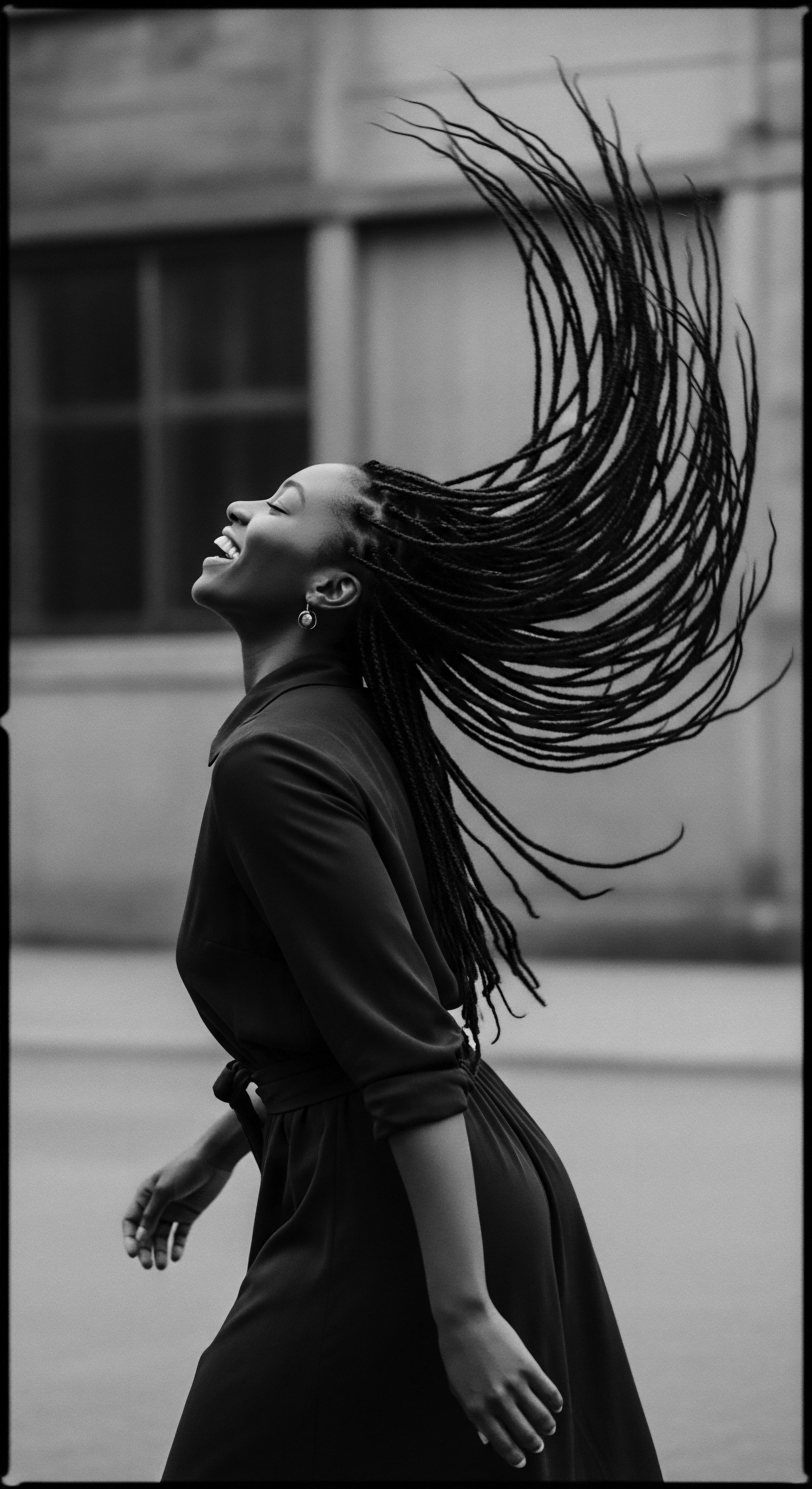
Reflection
To truly understand how ancient communities protected textured hair overnight is to understand a deeper philosophy of living. It is to recognize the enduring wisdom woven into the very fabric of human experience, a wisdom that sees hair not as a mere adornment, but as a living extension of self, a repository of ancestry, and a beacon of identity. The seemingly simple acts of covering hair for rest, or carefully styling it into protective forms, represent centuries of accumulated knowledge—a legacy passed from hand to hand, from generation to generation. This is the ‘Soul of a Strand’ ethos in its most authentic form ❉ honoring the past to guide the present, understanding that the vibrancy of our hair is inextricably linked to the stories and practices of those who came before us.
From the meticulously coiled Bantu knots to the silky embrace of a night covering, these traditions speak of care, resilience, and a profound respect for textured hair’s unique qualities. They remind us that the journey of hair health is a continuous dialogue with heritage, a celebration of inherited strength, and an active commitment to nurturing the beauty that has always been ours. As we move forward, may we carry this ancestral memory, allowing it to inform our choices and deepen our appreciation for every coil, every wave, every strand that tells a story of survival, creativity, and enduring beauty.
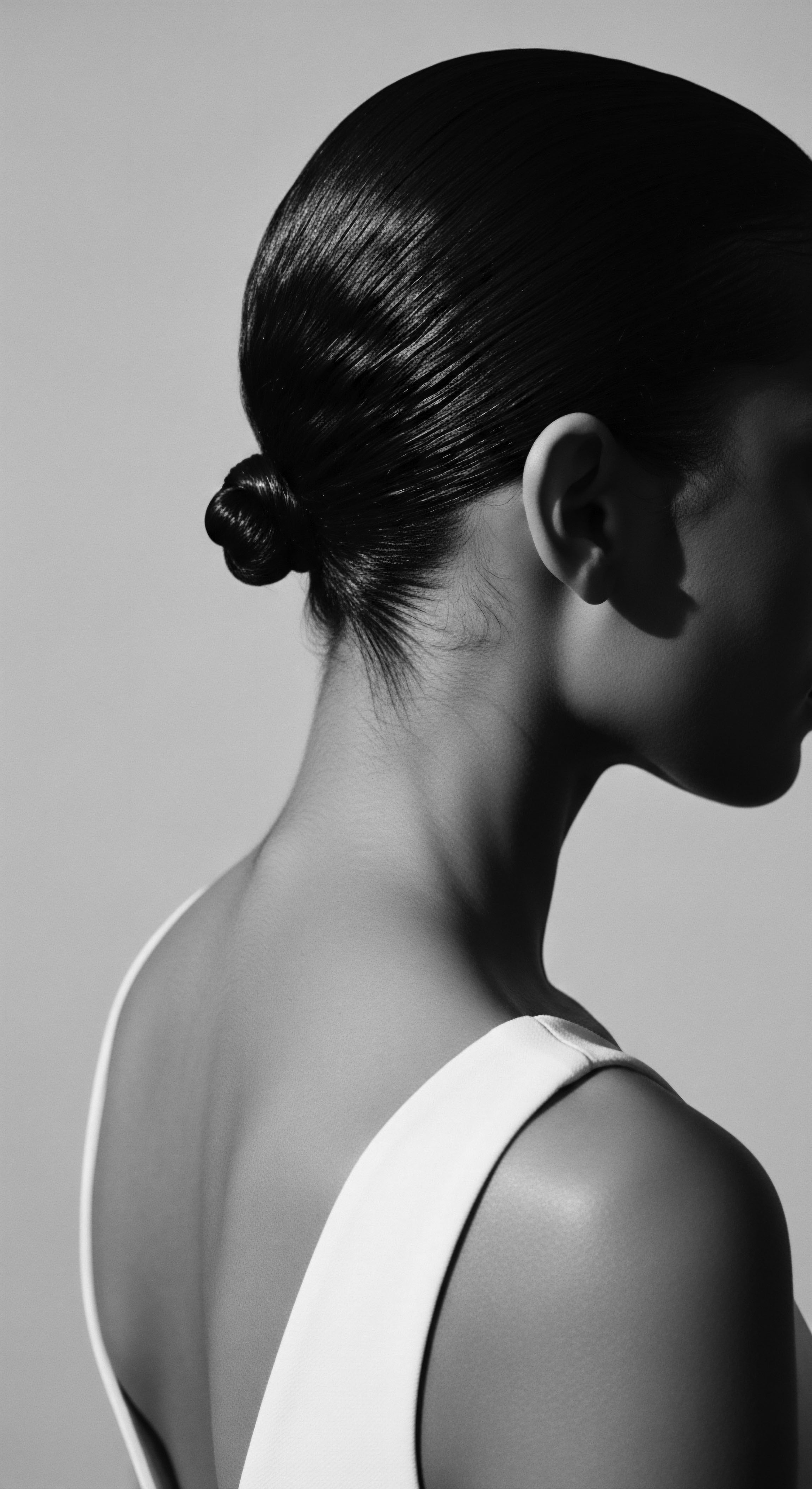
References
- Adekolya, S. (2024). Champi ❉ The Ancient Indian Practice. Obscure Histories.
- AfricanFabs. (n.d.). Hair Bonnet.
- Amerisleep. (2024). Benefits of Sleeping in a Bonnet ❉ Why You Should Do It.
- Annie International, Inc. (2023). The Origin Story Of The Bonnet.
- B.O.M.M. (2023). Bonnets ❉ A Cultural Staple in Black Communities.
- Byrd, A. & Tharps, L. (2014). Hair Story ❉ Untangling the Roots of Black Hair in America.
- Clinikally. (2024). Revitalizing Hair with Ancient Elixirs ❉ Unveiling the Secrets of Hair Oils.
- Curlsmith. (n.d.). 5 Ways to Protect Curls at Night.
- Davines. (n.d.). Protect Your Tresses ❉ The Importance of Protective Hairstyles.
- Healthline. (2020). How to Sleep with Curly Hair ❉ 5 Tips and Tricks.
- Katherine Haircare. (2022). Historical Hair Care Grew My Hair to Hip Length! Here’s How.
- Katherine Haircare. (2023). Protective Styles Are the Most Underrated Hair Growth Secret.
- Library of Congress. (n.d.). Heavy is the Head ❉ Evolution of African Hair in America from the 17th c. to the 20th c.
- Madhu Chanda das. (2024). “The Significance of Hair ❉ Cultural Wisdom and Spiritual Symbolism.”
- Mimi et Mina. (2022). How to Care for Afro Hair at Night.
- Natural Hair Mag. (2014). Spiritual Significance Of Hair Across Cultures.
- Nice One KSA. (2024). The Ultimate Guide to Scalp Care ❉ Achieve Healthy Hair from the.
- Odele Beauty. (2024). A History Lesson On Hair Braiding.
- OpenEdition Journals. (n.d.). Begram ❉ along ancient Central Asian and Indian trade routes.
- Prof. (Dr) Jamunadevi Chandramouli. (2023). ENHANCING HAIR AND SKIN HEALTH WITH NUTRITION AND LIFESTYLE MODIFICATION | The Ancient Ayurveda.
- Quora. (2012). How did people take care of their hair before the era of shampoos, conditioners and other cosmetic products?
- Rthvi. (2024). Exploring Ancient Hair Care Rituals ❉ Timeless Practices for Modern Hair Wellness.
- Sartorial Magazine. (2025). Braids, Locs, and Beyond ❉ The Beauty and History of Protective Styles.
- Sew Historically. (2019). History Of The Nightcap – Victorian And Edwardian Hair Care.
- Sleep.com. (2021). How a Hair Wrap Routine Protects More Than Just My Hair.
- Substack. (2025). Ancestral Hair Rituals to Nourish Your Hair and Soul.
- The Minds Journal. (2016). Spiritual Significance Of Hair ❉ 5 Long Forgotten Truths.
- The Skin Story. (2024). How to Encourage Healthy Hair Growth ❉ A Holistic Guide.
- The Silk Collection. (n.d.). Benefits of Silk Hair Wrap for Sleeping | Silk Bonnet.
- TikTok. (2025). Ancient African Ancestors Hair Routine.
- TikTok. (2025). Ancient Greek Hair Veils.
- Totnes Fashion & Textiles Museum. (n.d.). Hair and Wigs in Ancient Egypt.
- UCL Discovery. (n.d.). The Social and Ritual Contextualisation of Ancient Egyptian Hair and Hairstyles from the Protodynastic to the End of the Old Kingdom.
- VS Sassoon New Zealand. (2022). Which Hairstyle is Best for Sleeping?
- Wimpole Clinic. (2024). 10 Science-Backed Ways To Treat Your Dry Scalp at Home.
